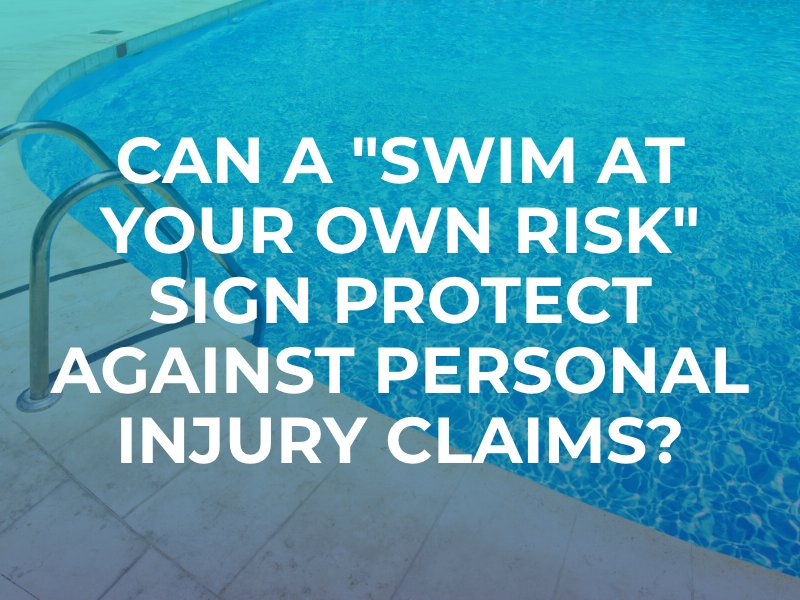Can A “Swim At Your Own Risk” Sign Protect Against Personal Injury Claims?
Swimming pools can be incredibly fun, but they can also present significant hazards. Pools pose many risks for swimmers, and it is important to know who is responsible if an injury occurs. Regardless of whether or not a pool is on private residential property or somewhere that the public has the right to be, there may be a “swim at your own risk” sign present.
Do these types of signs protect a pool’s owner from liability in the event an injury occurs?

Premises liability laws will usually make pool owners liable for injuries suffered by parties who use their facilities. However, there are some exceptions that depend on the contributing fault of the victim and whether or not the injured person was a trespasser. A sign may also mitigate the liability of the pool owner.
What Do Posted Signs Do In These Situations?
Posting a warning sign around the pool ostensibly places some responsibility on the swimmer to look out for their own safety. If the pool owner or operator has acted responsibly to warn swimmers of the known risks associated with the activities in which they are partaking, and the swimmer ignores these warnings, the pool owner we have a fairly good defense if the swimmer is injured. For example, suppose there are large and visible signs that warn pool-goers not to run around the pool. However, the swimmer chooses to run anyway, slips, and breaks their arm. In this case, the pool owner has a strong case that they took reasonable steps to warn guests of the risks and may not be liable for the incident.
However, if the signs that are posted (including “swim at your own risk” signs) are hidden or not readable, then they serve no purpose and will likely not be effective in defending against a premises liability claim. A “swim at your own risk” sign will also likely not shield a pool owner from liability if there were no other safety measures in place, such as a fence around the pool or a gate with a latch.
In general, if a “swim at your own risk” sign is present and visible, but a swimmer is injured anyway, it will generally be assumed that the swimmer knew of the risks and chose to participate anyway.
What About An “Attractive Nuisance?”
In cases involving swimming pools, we also need to be aware of the “attractive nuisance” doctrine. In these cases, a landowner can be held liable for injuries that occur to children who trespass on their land if the injury results from a hazardous object or condition that is likely to attract a child who is unable to understand the risks.
A swimming pool is almost always going to be considered an attractive nuisance for a child. To protect themselves in these instances, the property owner needs to have a fence with a locking gate around the pool to prevent a child from falling in and drowning or injuring themselves. If they do not have proper measures in place to prevent injuries to a child, a property owner is likely going to be held liable for injuries, even if a child was trespassing and even if there was a signs that says “swim at your own risk.” A child, it can be argued, may not understand what the sign means and does not know the full dangers presented by the swimming pool.
If you or a loved one was injured in swimming accident and you have questions about your legal options, our Atlanta personal injury attorneys are always available. Contact us today.